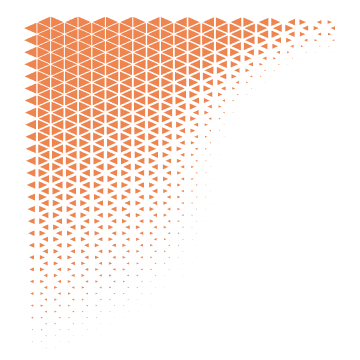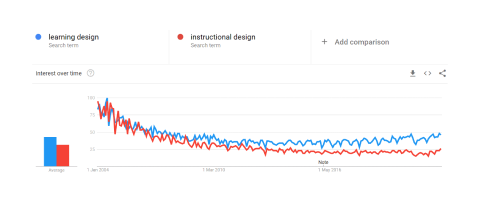Unit overview and outcomes
The purpose of this unit is to introduce the concept of learning design through a brief discussion on historical and contemporary models, then leading into how these models influence current practices in learning design, including activity creation and relevant technologies. The focuses throughout this unit will be on the online learning journey, however many of the theories and practices can also be applied to other learning environments.
This will be done in four modules by discussing the following topics.
- Learning design theories
- Learning design in practice
- Pathways in learning design
- Learning design technologies
Each module has the content presented first, followed by a summary, knowledge checks on the module content and the references for the module which can be used as a source for further learning. There is a glossary at the end of the unit with a summary of new terminology introduced.
This unit aims to provide skills and understanding to:
- articulate the role that designers and overall design play in the learning process;
- analyse a range of learning design theories and practices;
- explain how learner-centred design practices are used to design effective learning outcomes; and
- evaluate digital media to support the learning design process and enhance the learner experience.
Warning
This material has been reproduced and communicated to you by or on behalf of Swinburne of Technology in accordane with Section 113P of the Copyright Act 1968 (theAct).
The material in this communiction may be subject to copyright under the Act. Any fruthr reproduction or communication of this material by you may be the subject of copyright protection under the Act.

Swinburne University of Technology recognises the historical and cultural significance of Australia's Indigenous history and the role it plays in contemporary education.
Each day in Australia, we all walk on ancestral Indigenous lands.
We therfore acknowledge the tradition custodians of the land that our Australian campuses currently occupy, the Wurundjeri people, and pay respect to Elders past and present, including those from other areas who now reside on Wurundjeri land.
Learning design is an umbrella term that encapsulates the enhancement of the learning experience and answers the questions of what, when, where and how to learn. Key decisions that sit within the learning design structure include the content layout, structure, sequence of learning events and the type and frequency of learner assessment. Additionally, the application and choice of the technology used to support a unit are an essential part of the decision making process as they can inform the possible design choices.
The application of this structure is a conscious process that requires learning designers and instructors to think beyond "what content should I teach?" and carefully consider "what is the best way for learners to understand this concept?". This can be a mindset shift and pivots the focus of education from simple content-delivery to shaping the experience for the learner and the learning process.
Additionally, learning design is also a method or way of approaching content dissemination that helps designers to consider all the necessary factors in designing an online activity or course. An effective online activity or course needs to consider:
- the learners and their needs;
- the learning outcomes, or what the learners need to achieve; and
- the learning environment, including tools and resources.

Learning design is a mindset shift which focuses on the learner and the learner journey first when planning a learner experience. This shift may feel like the natural place to start but it is common for the focus to be heavily on the instructor and the educational process.
An instructor with a wealth of experience and knowledge in a particular subject can make assumptions about what critical information is strictly necessary to impart to a learner for a given unit of study. A learner-first design approach, along with the creation of learning outcomes, subtly shifts the focus from the content itself towards the content dissemination.

Utilising these learning design methods and practices and combining them with an iterative design model creates a model that is centred on improving the learner experience, not just for one cohort of learners, but for future learners as well. A learner-centred model, when implemented appropriately, increases learner engagement and retention of the topic at hand.
Learning design is particularly important in the online space. Learning online can easily become an isolating and confusing experience for a learner if they lack clear guidance or clear expectations.

The impact of the COVID-19 virus on the online learning space has been significant. Units of study and traditional learning and teaching spaces that had never previously been run online had to rapidly transition, often with minimal notice. Due to this, many swift changes were necessary to achieve this result; however, this temporary fix needs to be reassessed to ensure that what was delivered online initially out of necessity can evolve to be an online journey that enhances the learner’s experience.
Although the full impact from this change is still unfolding in both the higher education and corporate sectors, it seems clear that online learning has progressed rapidly and is now a widespread choice for many industries.

The distinction between instructional design and learning design can become blurred as some sources use these phrases interchangeably and some delineate, simply put, instructional design traditionally focuses on the instructor's preference, whereas learning design is strongly learner-centred.
Smith and Ragan (2004) define instructional design as “the systematic and reflective process of translating principles of learning and instruction into plans for instructional materials, activities, information resources, and evaluation. An instructional designer is somewhat like an engineer.” Whereas Koper and Olivier (2004) define learning design as “an application of a pedagogical model for a specific learning objective, target group and a specific context or knowledge domain.”
While there is overlap between these definitions, generally there is a layer to learning design that is situational and applied in nature. It takes the theory of instructional design and applies it to learning activities and interactions, and in doing this shifts away somewhat from the learning objects themselves.
Schmidt and Huang (2021) argue that none of the commonly used interpretations or definitions of learning design align with how the term is commonly used in this field so this appears to be a shifting space.
Based on Google search trends for the two terms, there appears to be a slight popularity shift away from instructional designer and towards learning design in recent times. As learning resources, tools, and delivery methods evolve to centre around the learner, similarly the language has adapted to accurately describe the creation process, and this gradual evolution in the industry is therefore reflected in the terminology.

https://trends.google.com/trends/explore?date=all&q=learning%20design,instructional%20design
Reflection Point
Watch the video below by the Institute for Adult Learning Singapore which discusses six principles in learning design and then consider the questions that follow. Select the play button to start.
- Are these principles familiar to you in a learning context? Have you experienced any of them in your own learning?
- Do the principles outlined in the video map to the definition of learning design provided by Koper and Olivier (2004)? Why or why not?

This unit is designed to be a general introduction to learning design and is suitable for the different sectors that it is used in: higher education, vocational education and training (VET) and training in the corporate sector. However, as these areas tend to have different aims and target learners, some content may be more relevant to one area than the others.
Online learning in the corporate sector is generally designed for upskilling of existing staff or inducting new staff. The professional development encompassed in the eLearning for this area is generally specific to the job, needs to be fully online and often asynchronous. The content can range from a mandatory health and safety onboarding module, through to an optional and advanced online unit that builds on the existing skills of the learner.
While many universities and vocational schools already had some online component, the impact of COVID-19 on face-to-face teaching meant that educational institutions with limited presence in the online learning space transitioned many courses and units online to preserve as many student enrolments as possible. The degree to which higher education learning is completed online varies based on the area of study. For example, some content within a Bachelor of Arts is likely more transferable to an online format than the content in a Bachelor of Nursing. Accreditation requirements can also play a role in this.
Advantages of online learning
The advantages of online learning are the same regardless of the background the learner comes from. Learners are given the opportunity to complete courses or units of study, review additional resources, engage in activities and be assessed within the chosen online platform. By being able to do this remotely, the cost of transportation and accommodation is reduced for the learner.
Although there are some learning design approaches that may be more applicable to one sector or the other, the majority of core concepts are applicable to both.
This module introduced the concept of learning design, and how it relates to instructional design, the learning outcomes for this unit and some differences between online learning across sectors.
In the next module, some of the common theories in learning design will be discussed.
Complete the knowledge checks below to assess your understanding.
Knowledge Check
Forum Activity
This section of the Study Guide provided you with some introduction about medical terminologies, including the word structure of a medical terminology and the different abbreviations commonly used in the field. You also learned the common medical equipment and procedures that you may come across as a manager, including the different medical specialties and Medicare and private health insurance. We also looked at the different policies and procedures that you need to familiarise yourself with and the need to adhere to them to ensure efficient and smooth service delivery and coordination between fellow workers.
